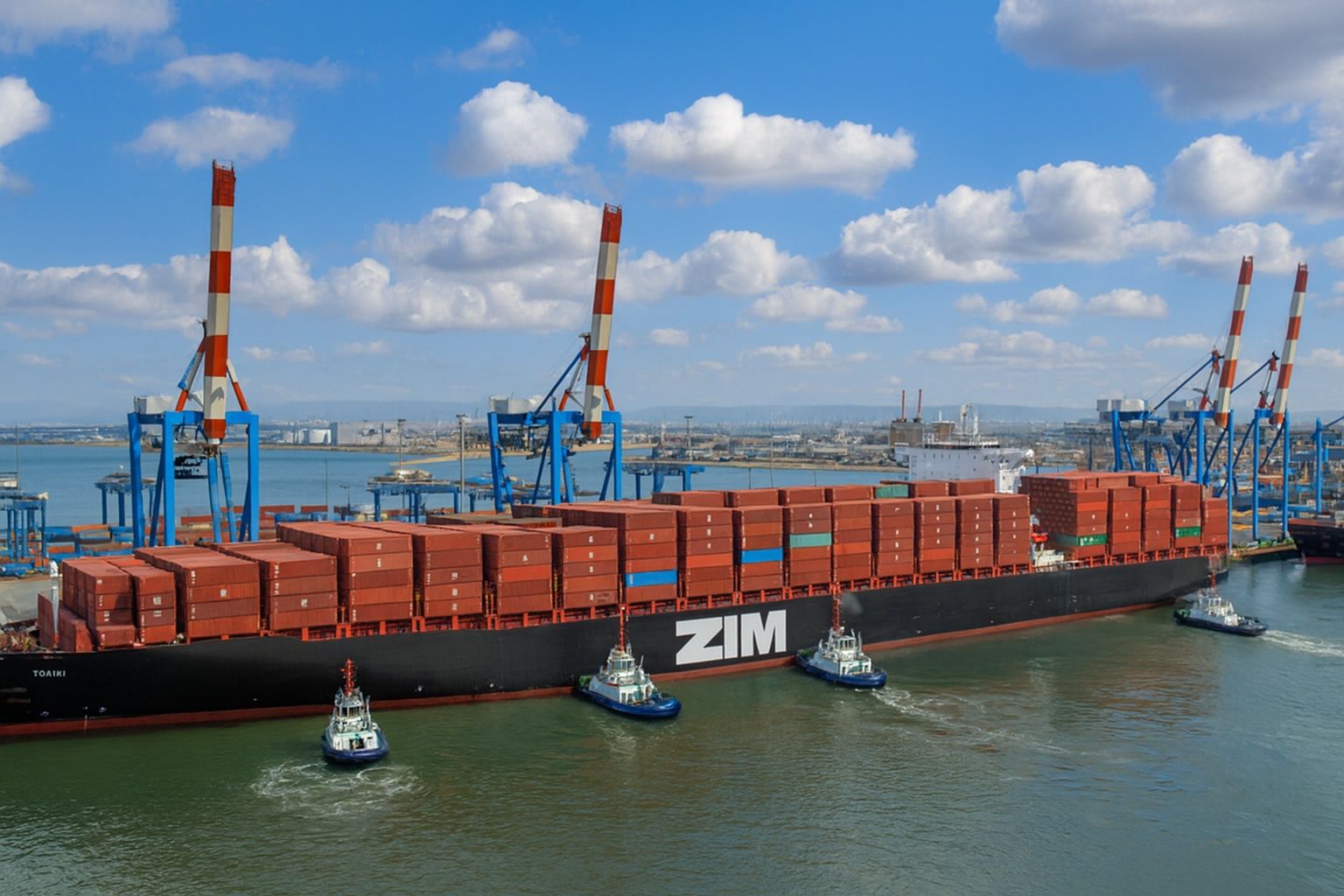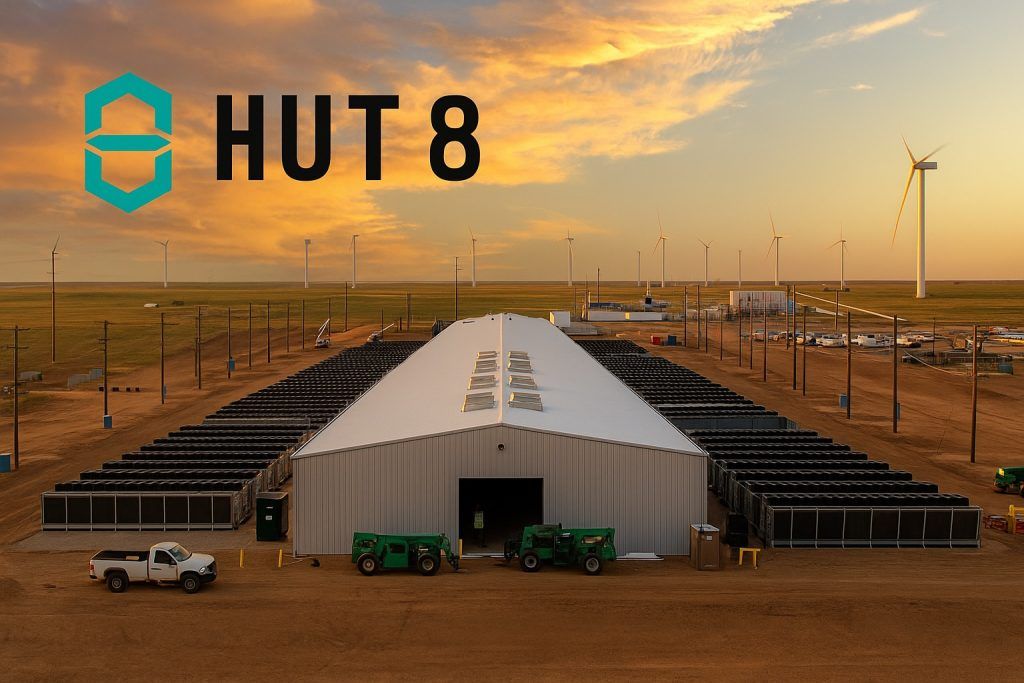- 5% Daily Rally: ZIM Integrated Shipping Services (NYSE: ZIM) stock jumped roughly 5% on Tuesday, October 14, closing around $13.4 [1]. This marks a sharp rebound of about 20% from early-October lows near $11 (a 52-week low of $11.03) [2], though shares remain deep in the red for 2025.
- Steep Yearly Decline: Even after the recent bounce, ZIM’s stock has lost significant ground over the past year amid weaker results and macro headwinds [3]. The current price is less than half of the 52-week high of $30.15 [4], leaving the year-to-date return around -40% as global shipping stocks lag.
- Earnings Slump: The container carrier’s latest earnings disappointed. In Q2 2025, ZIM’s revenue fell ~15% year-over-year to $1.64 billion, and net income collapsed to just $24 million (EPS $0.19) versus $373 million a year earlier [5] [6]. Earnings badly missed analyst forecasts (EPS was $1.03 below consensus), prompting an 8% one-day stock drop in August [7].
- Dividend Trim & Outlook: ZIM has drastically scaled back shareholder payouts from its pandemic-era windfalls. It declared a token quarterly dividend of $0.06 per share (paid in September), a 1.7% annual yield [8] [9]. Management did raise full-year guidance midpoints, now projecting FY2025 EBITDA of $1.8–$2.2 billion and EBIT of $550–$950 million [10], signaling cautious optimism despite the downturn.
- Analysts Bearish, Valuation Debated: Most analysts remain negative on ZIM. The stock carries a “Strong Sell” consensus rating with a roughly $14–15 average price target [11] – barely above current levels. Multiple firms cut targets after the earnings miss (e.g. Barclays to $13.30, JPMorgan to $9.80) [12]. However, some see deep value: ZIM trades at ~0.4x book value, and bulls argue the mid-teens price may already price in worst-case scenarios [13]. Notably, one hedge fund (Kingstone Capital) recently acquired ~0.8% of ZIM’s shares, betting on a turnaround at depressed prices [14].
- Global Shipping Headwinds: The broader container shipping sector is facing strong headwinds. Spot freight rates have plunged to ~20-month lows – the benchmark Drewry index for a 40-foot box is around $1,670, and China–US West Coast spot rates are down ~58% from a year ago (near or below break-even levels for carriers) [15]. A renewed U.S.-China trade rift (new tariffs in 2025) has dampened cargo volumes [16], and an onslaught of new vessels is adding to a capacity glut. Industry analysts warn overcapacity could peak by 2027, reminiscent of 2016’s slump [17], potentially squeezing shipping profits for years.
Stock Rebound Off Lows
ZIM’s share price has shown signs of life after a prolonged slide. On October 14, the stock surged about 5% intraday, closing at approximately $13.36 (up from $12.72 the prior day) [18]. This pop extends a short-term rebound from early October, when ZIM scraped a 52-week low just above $11 [19] amid heavy selling. Even with the recent rally, the stock is still trading in the mid-teens – a far cry from its $30+ highs within the past year [20].
Year-to-date performance remains bleak. ZIM has shed roughly 40% of its value since January, reflecting broader weakness in shipping equities. Over a one-year horizon, the stock’s total return is deeply negative as well [21]. By comparison, major market indices have fared much better, underscoring how sharply sentiment toward container liners has swung from the boom of 2021–22 to the bust of 2023–25. ZIM’s market capitalization now stands near $1.5 billion, down from peaks above $3 billion. In short, the company has gone from market darling to distressed valuation in the span of a few years.
Volatility is high. ZIM’s shares have a beta around 1.7, meaning they tend to swing more wildly than the overall market [22]. Heavy trading volumes accompanied the latest rebound, suggesting active short covering or bargain hunting by investors. The stock’s 52-week range – roughly $11 to $30 – illustrates the extreme price swings tied to the cyclical container shipping market [23]. For traders, ZIM has become something of a high-beta play on global trade sentiment, reacting sharply to news on freight rates, tariffs, and company-specific developments.
Earnings Under Pressure
ZIM’s financial results have deteriorated markedly from the pandemic-era shipping boom. The company’s second quarter 2025 numbers underscored the downturn:
- Revenue came in at $1.64 billion, down 15% from the $1.93 billion achieved in Q2 2024 [24].
- Net income plunged to $24 million (just $0.19 in EPS), a dramatic drop from $373 million (EPS $3.08) in the same quarter last year [25]. Profit margins collapsed amid falling freight rates and higher costs.
- ZIM’s Q2 EPS of $0.19 missed analyst expectations by a wide margin (consensus was around $1.22), and revenue also fell short of forecasts [26]. The earnings miss and weak outlook triggered an 8% one-day stock drop when results were released in August [27].
The steep earnings decline was not entirely unexpected – industry conditions have worsened – but the magnitude of the miss surprised many observers. CEO Eli Glickman noted that “market disruptions and volatility” are pressuring results, though he emphasized ZIM’s efforts to control costs and leverage its expanded fleet [28]. The company carried slightly lower container volume in Q2 (895k TEUs, down 6% YoY) and saw average freight rates per TEU fall ~12% YoY [29], squeezing revenues. At the same time, operating expenses (e.g. fuel, vessel charter costs) remain elevated, shrinking profitability.
Dividends: During the 2021 shipping boom, ZIM gained fame for its outsized dividends, but those days are over. In Q2, the company declared a quarterly dividend of $0.06 per share [30] – a token payout totaling just $7 million, reflecting a conservative 1.44% payout ratio [31]. This equates to an annualized yield of roughly 1.7% at the current stock price [32]. By contrast, a year ago ZIM paid much larger special dividends thanks to record profits. The dividend cut signals a pivot to cash preservation as earnings shrink. ZIM’s management stated the modest dividend is prudent “given our performance to date,” even as they express confidence in long-term value creation [33]. For income investors, ZIM’s once eye-popping yield has dwindled to market-average levels.
Guidance: Notably, ZIM slightly raised its full-year 2025 earnings guidance midpoints despite the soft quarter, indicating some optimism for the second half. The company now forecasts adjusted EBITDA of $1.8–$2.2 billion and adjusted EBIT of $550–$950 million for 2025 [34] – a bump up from prior guidance. Management cited operational resilience and cost control as reasons to expect better results ahead [35]. However, these ranges are still well below last year’s levels, and implicitly assume a weaker back half than the front half of 2025 (ZIM earned ~$2.5 billion EBITDA in H1). The guidance implies that Q3 and Q4 will remain challenging, just slightly less so than initially feared. Investors will be watching the upcoming Q3 2025 earnings report (due in November) to see if ZIM can meet these targets or if further revisions are needed.
Analyst Views and Market Sentiment
Wall Street sentiment toward ZIM is largely bearish at present. According to MarketBeat data, seven out of eight research firms tracking ZIM rate the stock a Sell or equivalent, versus only two at Hold and none at Buy [36]. The consensus 12-month price target is about $14.5 per share [37], essentially in line with the current market price. In other words, analysts on average see little upside – a reflection of the industry’s cloudy outlook and ZIM’s deteriorated earnings.
Several banks trimmed their targets and estimates after the Q2 earnings miss. For instance, Barclays cut its target from $14.80 to $13.30 (maintaining an Underweight rating) and JPMorgan nudged its target to $9.80 (Underweight) [38]. Citigroup reiterated a Sell, and Jefferies has a Hold with a higher $17 target, but even that is a far cry from ZIM’s previous highs [39]. Overall, the sell-side is signaling that ZIM’s risks – from volatile freight rates to high leverage – outweigh any near-term reward.
At the same time, valuation-minded investors note that much of the bad news may already be “priced in.” After collapsing over 40% in the past year, ZIM shares trade at extremely low earnings multiples (trailing P/E < 1, forward P/E ~4) and around 0.4 times book value [40] [41]. This reflects expectations of continued profit declines. Yet if ZIM’s fortunes even modestly improve, the stock could appear very cheap. Analysts are debating whether the current valuation is a value trap or a deep-value opportunity. TS², a financial news outlet, observes that the debate hinges on if downside risks (e.g. weak freight demand, potential losses) are fully baked into the stock, or if upside catalysts (a market rebound, strategic moves) could surprise to the upside [42]. Some bullish scenarios, such as a detailed discounted cash flow analysis, suggest the stock’s intrinsic value could be significantly higher than mid-teens if global trade normalizes [43].
Insider and Institutional Moves: One vote of confidence came from Kingstone Capital Partners, a Texas-based investment firm, which disclosed a new stake of 985,000 shares in ZIM during Q2 (worth ~$15.8 million) [44]. That position represents roughly 0.8% of the company. Kingstone’s buy suggests some contrarian institutional investors are bottom-fishing, viewing ZIM’s depressed price as an opportunity. The stock’s substantial short interest (over 17% of float sold short) [45] [46] also means any positive surprises could spark a short-covering rally – something evidenced by the sharp bounce off the $11 low.
Meanwhile, takeover speculation has swirled around ZIM. In mid-September, Israeli media reported that CEO Eli Glickman (who is also a co-owner) and a financial partner made a preliminary buyout offer for the company [47]. The offer was reportedly below the board’s expectations, leading ZIM’s board to engage advisory firm Evercore to evaluate options [48]. ZIM officially declined to comment on “market rumors or speculation” [49], and no formal proposal has been confirmed. Nonetheless, the talk of management-led buyout interest fueled a brief rally – ZIM’s shares jumped nearly 10% at one point in September on the rumor [50]. While a takeover is far from certain, the episode highlights that insiders see value in the company that the public market may be overlooking. It introduces a potential catalyst: if a credible buyout bid or strategic investment emerges, it could put a floor under the stock. For now, investors are left guessing whether the “smoke” of buyout chatter will eventually lead to fire or dissipate.
Looking ahead, earnings forecasts for ZIM remain subdued. Analysts predict full-year 2025 EPS will be down roughly 80% from 2024 levels [51], given the collapse in freight rates and higher costs. Thereafter, the profit outlook depends heavily on a recovery in shipping fundamentals. The few more optimistic analysts argue that ZIM’s flexible, asset-light strategy (chartering many ships instead of owning) and its focus on niche trade lanes could allow it to weather the storm and rebound faster when conditions improve. But the prevailing view on Wall Street is one of caution, if not outright skepticism, until clear signs of a turnaround emerge.
Global Shipping Challenges Weigh on Prospects
ZIM’s struggles cannot be viewed in isolation – they mirror a broader global shipping downturn. After a record surge in 2021’s post-pandemic trade boom, the container shipping industry has entered a slump due to cooling demand, geopolitical tensions, and oversupply. Key factors dragging on ZIM and its peers include:
- Trade War & Tariffs: Heightened trade tensions have re-emerged, hurting cargo volumes. In fact, a raft of new U.S. tariffs imposed in early 2025 contributed to a slump in ocean shipping demand [52]. Major U.S. importers front-loaded shipments before tariffs hit, resulting in an early peak season and a lull afterward. With U.S.-China relations strained, some retailers are now pulling back on orders, citing tariff-related inflation and uncertain consumer demand [53] [54]. As roughly 80% of global trade moves by sea, any slowdown in trade flows directly impacts container lines’ volumes [55]. ZIM, which has significant Transpacific exposure, felt the pinch as transoceanic volumes softened.
- Plunging Freight Rates: Container freight rates have collapsed from their pandemic highs. Spot rates on major routes are at their lowest levels since early 2024 [56]. For example, the cost to ship a 40-foot container from Shanghai to Los Angeles is now around $2,200, down ~58% from a year ago [57]. Critically, that rate is roughly at the break-even threshold for leading carriers’ profitability [58]. “Rates have fallen below leading-cost operators’ break-even for the first time since late 2023,” notes Jefferies shipping analyst Omar Nokta [59]. Other routes tell a similar story: Asia–Europe and trans-Atlantic freight prices have also retraced to pre-boom levels. For ZIM, which operates in many spot-heavy trade lanes, the rate plunge means its average realized pricing has dropped steeply, compressing margins. About half of container volumes globally move on spot terms (vs. contract), and that percentage can rise when spot rates undercut contracted rates [60] – a dynamic now playing out and shifting bargaining power back to customers.
- Capacity Glut: The container shipping industry is adding capacity at the wrong time. Major carriers (including Maersk, MSC, Hapag-Lloyd, Cosco, and ZIM itself) ordered a wave of new ships during the boom, many of which are being delivered in 2024–2025. Supply is therefore expanding just as demand growth stagnates. Supply chain advisory firm Sea-Intelligence warns the sector is approaching a cyclical overcapacity phase that will peak around 2027, reaching a level comparable to 2016 when carriers were forced into price wars [61]. This looming glut has industry veterans concerned. “A weakened U.S. economy plus a supply glut at sea? That’s a recipe for brutal rate wars, idle tonnage, and carriers scrambling to plug financial holes,” says consultant Jon Monroe, a former shipping executive [62]. “The question isn’t if the storm hits, it’s how hard.” In practical terms, overcapacity means liners may resort to intense competition (slashing rates), idling ships, or canceling sailings to balance supply – all of which hurt profitability. ZIM, as a smaller global carrier, could be vulnerable if freight rates deteriorate further in an oversupplied market.
- Energy Costs and Regulations: Fuel prices remain a double-edged sword for shippers. Marine bunker fuel is one of ZIM’s largest operating costs, typically comprising ~40-50% of vessel operating expenses [63]. Recently, global oil prices have been volatile amid geopolitical events. While fuel costs are currently lower than 2022 peaks, any resurgence in oil prices would squeeze carrier margins at a time when they have less ability to pass on costs. Furthermore, new environmental regulations are coming into force. In the EU, the FuelEU Maritime regulation (effective 2025) and IMO decarbonization rules require cleaner (often pricier) fuels or emissions credits [64]. ZIM has responded by deploying more LNG-powered and fuel-efficient ships in its fleet, aiming to cut fuel consumption and comply with green standards. The company even introduced surcharges to offset the cost of low-emission fuels [65]. While these moves should help long-term sustainability, in the short run they introduce additional costs and complexity. Managing energy expenses will be critical for ZIM – any savings from lower fuel prices could provide relief, whereas oil spikes or carbon costs would add to its challenges.
- Macro Economy: Broader economic trends are not particularly favorable either. High inflation and rising interest rates in many regions have cooled consumer spending on goods, tempering import demand. Europe’s economy is sluggish, and China’s growth has downshifted, softening export volumes. The IMF projects only modest trade volume growth this year, far below the pace of new shipping capacity. If a global recession were to develop, it could further hit trade flows (though conversely, any major stimulus or recovery – especially in China – could bolster freight activity). For now, ZIM must navigate an environment of tepid trade growth and potential regional disruptions (such as the conflict in the Middle East, which can reroute ships and impact insurance and fuel costs).
In summary, ZIM is contending with a perfect storm of industry headwinds: falling rates, rising costs, and policy uncertainties. These external factors have a direct impact on the company’s financial performance and stock trajectory.
Outlook: Rough Seas Short-Term, Potential Upside Longer-Term?
In the short term (next 1–2 quarters), most experts anticipate continued turbulence for ZIM. Jefferies analyst Omar Nokta expects the upcoming fourth quarter of 2025 to be the weakest for the industry since 2023, given the low freight rate environment and seasonal slowness after the holidays [66]. Profitability may remain razor-thin or even turn into losses for some routes. ZIM’s own guidance implies only a small profit for the second half, and that assumes no further deterioration. Investors should be prepared for volatility around the Q3 earnings release in November and any updated forecasts the company provides. The stock could retrace gains if results disappoint or if management strikes a cautious tone. Conversely, any positive surprise – e.g. better-than-expected peak season volumes or cost savings – might fuel a relief rally, considering the heavy short interest.
Market watchers also note catalysts (or risks) that could play out in the near term:
- Potential Takeover or Consolidation: The recent buyout rumors highlight a wildcard – ZIM could become a takeover target if its valuation stays low. The container shipping sector has seen consolidation in the past (e.g. Maersk’s acquisitions, CMA CGM’s deals), and ZIM’s niche routes and customer base could be attractive to a larger player or private equity. Even speculation of a higher offer from ZIM’s CEO or another party could buoy the stock. However, absent a concrete bid, this remains speculative. Management’s “no comment” stance [67] suggests nothing imminent, and any insider bid would likely need to offer a premium to satisfy shareholders, which requires confidence in a turnaround.
- Freight Rate Developments: Spot rates appear to be nearing a bottom, but whether they stabilize or slide further is crucial. If global shipping rates find a floor (or tick up slightly due to carriers idling capacity), investor sentiment on shipping stocks could improve. ZIM’s share price tends to correlate with container indices. Conversely, a continued rate free-fall into loss-making territory could spook the market. Watch for Drewry’s weekly World Container Index and comments from peers (like Maersk’s guidance updates) as barometers.
- Fuel Prices and Costs: A drop in oil prices or easing bunker costs would be a welcome development for ZIM, directly boosting margins. On the flip side, any oil price spike (due to geopolitical tensions, for example) could hurt earnings given the difficulty of fully passing through fuel surcharges in a weak freight market. ZIM’s newer LNG-fueled ships give it some hedge, as LNG has been cheaper than oil-based fuels at times, but the overall fleet still relies heavily on conventional bunker. Investors should monitor energy markets and ZIM’s cost management efforts (the company has touted an “improved cost structure” post-pandemic [68]).
Looking at the medium term (2024–2026), opinions diverge on ZIM’s prospects:
- Bearish View: Bears argue that the container shipping cycle is firmly in a downtrend that could last several years. With excessive capacity delivering into 2025–26 and trade growth subdued, freight rates may remain depressed. Under this scenario, ZIM’s earnings would stay very weak (or even turn negative in some quarters), making it hard to justify a higher stock price. The company’s debt levels (net debt about $3 billion as of mid-2025 [69]) and lease obligations could become a greater concern if cash flow dries up. Some analysts warn ZIM might burn cash in 2024 given low margins [70], which could eventually pressure its dividend or require tapping its ~$2.9 billion cash reserves. Essentially, the pessimistic outlook sees ZIM muddling through lean years, with shares potentially range-bound or lower until the shipping cycle turns decisively.
- Bullish (Contrarian) View: More optimistic observers believe that by 2025–26, the worst will be behind ZIM. They point to the company’s agile operating model – ZIM charters many vessels on shorter durations, which allowed it to scale up quickly in the boom and could allow it to scale down costs in a bust. ZIM also has a relatively asset-light approach (vs. owning a huge fleet outright), potentially giving it flexibility to navigate downturns. Additionally, ZIM’s focus on certain niche routes (e.g. specialized intra-Asia or Latin America lanes) and its digital initiatives could help it eke out better margins than the commoditized East-West routes. If global economic conditions improve (say, the U.S. avoids recession and China stimulates its economy), container volumes could surprise to the upside, lifting freight rates off the bottom. Under a moderate recovery scenario, ZIM’s earnings might rebound more strongly than current consensus expects. Bulls note that ZIM’s balance sheet, while leveraged, still has a cushion of cash built during the boom, and the company has survived previous down cycles over its 75-year history. Any signs of a demand uptick or successful cost-cutting could lead investors to re-rate the stock upward from its distressed valuation.
- Valuation Upside Case: Some contrarians even see multi-bagger potential in the event of a major turnaround. For example, a Simply Wall St analysis calculated a fundamental fair value of ~$13–14 for ZIM under current forecasts, but also highlighted that community investors’ valuation estimates range widely (from just $3 up to $450 per share) depending on assumptions [71] [72]. This underscores the high uncertainty. If the global shipping cycle in 2026–27 were to swing back to strong profitability (as it notoriously did after 2016’s lows), ZIM’s earnings could recover significantly – and so could its stock. The bull case hinges on the idea that shipping is cyclical, and buying at the point of maximum pessimism can yield outsized returns when the cycle improves. That said, timing such turns is difficult, and weaker players can struggle to survive long enough to see the next boom.
Expert Commentary: Until clearer trends emerge, financial experts advise caution with ZIM. “The sector’s recovery is fragile – ZIM’s ability to manage costs and retain pricing power will be tested further if market softness continues,” one analyst noted after the latest earnings [73]. The consensus among shipping analysts is that 2024 will likely remain challenging, with hopes pinned on a more meaningful recovery by 2025–2026. Even ZIM’s CEO has acknowledged the “highly uncertain market environment” and vowed to focus on factors within the company’s control [74] – namely, operating efficiency and commercial agility. This suggests ZIM will prioritize streamlining operations and shoring up its balance sheet during the downturn.
For retail investors and industry watchers, ZIM Integrated Shipping represents a high-risk, high-volatility bet on a cyclical industry. In the near term, the stock’s trajectory will likely follow news flows on freight rates, global trade policy, and the company’s own results. Any sign that the “storm” in global shipping is abating could buoy ZIM’s shares, while further headwinds could send it back down toward recent lows. Longer term, if ZIM can ride out the storm – leveraging its modern fleet and niche strategy – there may be calmer waters and improved earnings on the horizon. As of now, however, caution prevails: ZIM is navigating rough seas, and investors are watching closely for any change in the tides.
Sources: ZIM Q2 2025 earnings release [75] [76]; TS2 Tech market report [77] [78]; MarketBeat (analyst ratings, investor moves) [79] [80]; Reuters (industry conditions) [81] [82]; XTB Market Analysis [83]; Investing.com earnings summary [84].
References
1. intellectia.ai, 2. www.marketbeat.com, 3. ts2.tech, 4. www.marketbeat.com, 5. www.prnewswire.com, 6. www.prnewswire.com, 7. www.investing.com, 8. www.marketbeat.com, 9. www.marketbeat.com, 10. www.prnewswire.com, 11. www.marketbeat.com, 12. www.marketbeat.com, 13. ts2.tech, 14. www.marketbeat.com, 15. www.reuters.com, 16. www.reuters.com, 17. www.reuters.com, 18. intellectia.ai, 19. www.marketbeat.com, 20. www.marketbeat.com, 21. ts2.tech, 22. www.marketbeat.com, 23. www.marketbeat.com, 24. www.prnewswire.com, 25. www.prnewswire.com, 26. www.investing.com, 27. www.investing.com, 28. www.prnewswire.com, 29. www.prnewswire.com, 30. www.prnewswire.com, 31. www.marketbeat.com, 32. www.marketbeat.com, 33. www.prnewswire.com, 34. www.prnewswire.com, 35. www.prnewswire.com, 36. www.marketbeat.com, 37. www.marketbeat.com, 38. www.marketbeat.com, 39. www.marketbeat.com, 40. www.xtb.com, 41. www.marketbeat.com, 42. ts2.tech, 43. ts2.tech, 44. www.marketbeat.com, 45. www.marketbeat.com, 46. www.marketbeat.com, 47. www.xtb.com, 48. www.xtb.com, 49. investors.zim.com, 50. www.xtb.com, 51. finance.yahoo.com, 52. www.reuters.com, 53. www.reuters.com, 54. www.reuters.com, 55. www.reuters.com, 56. www.reuters.com, 57. www.reuters.com, 58. www.reuters.com, 59. www.reuters.com, 60. www.reuters.com, 61. www.reuters.com, 62. www.reuters.com, 63. seekingalpha.com, 64. www.zim.com, 65. www.zim.com, 66. www.reuters.com, 67. investors.zim.com, 68. www.prnewswire.com, 69. www.xtb.com, 70. finance.yahoo.com, 71. simplywall.st, 72. simplywall.st, 73. simplywall.st, 74. www.prnewswire.com, 75. www.prnewswire.com, 76. www.prnewswire.com, 77. ts2.tech, 78. ts2.tech, 79. www.marketbeat.com, 80. www.marketbeat.com, 81. www.reuters.com, 82. www.reuters.com, 83. www.xtb.com, 84. www.investing.com








